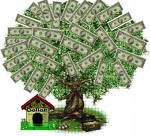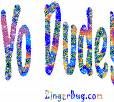![]()
![]()
![]()
Use LEFT and RIGHT arrow keys to navigate between flashcards;
Use UP and DOWN arrow keys to flip the card;
H to show hint;
A reads text to speech;
21 Cards in this Set
- Front
- Back
|
What are the 3 features of language?
|
Language is arbitrary, ambiguous and abstract
|
|
|
Descr why language is arbitrary?
|
"Only has meaning in the eye of the beholder." Language is arbitrary, which means that verbal symbols are not intrinsically connected to what they represent. Language is always changing and continually incorporates words from people of other cultures or social communities
I.e. the word “modem” has not natural relationship to the instrument that allows us to connect to the internet |
|
|
Language doesn’t have clear cut or precise meaning. The meaning of these words varies with cultural contexts and individuals experience
.e. a “good friend” to one person may mean someone to hang out with while to another it means someone to confide in, |

Descr why language is ambiguous?
|
|
|
Words are not concrete or tangible phenomena. They stand for people, events, objects, and feelings but they are not what they represent.
|

Descr why language is abstract?
|
|
|
What are the 3 principles of communication?
|
Interpretation creates meaning
and Communication is guided by rules and Punctuation affects meaning |
|
|
We have to interpret what language means.
a) Brute facts objective, concrete phenomena, and activities. I.e. football game brute fact is that periodically people gather into a roughly circular cluster b) Institutional facts meanings of brute facts based on human interpretation I.e. we call that activity a huddle and the institutional fact is that the players are planning their next play |

Descr "interpretation creates meaning" and the 2 tools
(brute and institutional facts)we use to create meaning? |
|
|
Descr how "communication is guided by rules" and what are the 2 rules?
|
Rules guide our everyday interaction by by telling us when, what and how to communicate and how to interpret others verbal and nonverbal communication. Most of the time we aren’t conscious of the rules that guide us until one is broken
We use 2 rules: A) Regulative rule regulate interaction by specifying when, how, where and with whom to communicate. I.e. some families have rule about not arguing a dinner table while others regard arguments as a normal accompaniment to meal time. b) Constitutive rules define what a particular communication means or stands for. We learn that certain types of communications show certain emotions i.e. respect – listening attentively, not interrupting i.e. professionalism – speaking effectively and taking a voice |
|
|
Descr how punctuation affect meaning?
|
Punctuation of verbal communication is a way to mark a verbal flow of activity into meaningful units. Before we can attribute meaning into communication we must establish its boundaries; who initiated communication and when the interaction began
I.e. if a co-worker asked you out to lunch then they initiated the interaction |
|
|
Descr the symbolic nature of communication and 6 ways that symbolism/language affect our lives?
|
1 Defines phenomena
2 Eval phenomena 3 organizes experience 4 allows for hypothetical thought 5 allows for self reflection 6 Defines relationships and interactions w other |
|
|
Descr how "symbolism define phenomena"
and totalizing? |
the most basic symbolic ability is definition. We us words to define and label ourselves, others, and experiences.
Totalizing is emphasizing one attribute and ignoring the rest. We responding to a person as if only one label totally represents that person. We fix on one symbol to define that person and fail to recognize other aspects. This isn’t same as stereotype when we define a person as having same characteristics as a group they belong to I.e. totalize person by sexuality “gay” or interest “jock”. Totalizing situation like “work” |
|
|
Descr how "language evaluate phenomena"?
What is "loaded language" and reapproprate language and give examples. |
We describe people and situations with terms that evaluate how we feel
I.e. tender milk fed veal instead of meat from a baby calf that was kept anemic to keep it tender I.e. “war on terrorism” a) Loaded language words that slant our perception and meaning I.e. geezer and old fogy (make us regard old people with contempt or pity instead of senior or elderly person B) Reappropriate language when a group reclaims a term that was used to degrade its members and treat those terms as positive self descriptions I.e. gays calling themselves “queers” as a positive statement about their identity I.e. blacks calling themselves “niggers” |
|
|
Descr how language organizes experience?
|
We organize our perceptions of events and experiences in our lives. Symbols organize our perceptions and allow us to think about abstract concept.
I.e. abstract concepts like justice, integrity, and good family life Our capacity to abstract also can distort thinking as in stereotyping |
|
|
Descr how "language allows for hypothetical thought"?
|
thinking about experiences ands ideas that are not a part of your concrete daily reality
I.e. planning, dreaming, set goals, and imagine possibilities |
|
|
Descr how "language allows self reflection"
What are the 2 aspects of self 'I" and "me". |
we use language to reflect on ourselves. Our capacity to use symbols to think about ourselves is responsible for civilized society.
(2) Aspects of self: a) I the spontaneous creative self. I act impulsively in response to inner needs and desires. I is impervious to social conventions b) Me the socially conscious part of self that monitors and moderates the I’s. The me is keenly aware of social conventions |
|
|
Our verbal communications conveys how we perceive ourselves and others.
I.e. addressing person as “Mam or “Mrs.” instead of by their first name symbolizes a more formal less familiar relationship |

Descr how language defines relationships and our interactions w others
|
|
|
What are 3 dimensions of relationship level meaning?
|
a) Responsiveness-the questions or statements of agreement or disagreement we show our interest in others communication
b) Liking - we express liking verbally by statements like “I really enjoy being with you today.” c) Power - communication to define dominance or to negotiate for status and influence i.e. the boss talks you don’t interrupt, you look at him in the eye. When the boss talks he can interrupt you and may not look at you in the eye |
|
|
What are 4 guidelines for engaging effective communications
|
1 Engage in person centered communications
2 be conscious of abstractions 3 qualift language - qualify overgeneralizations and language so that we don’t mislead ourselves or others into mistaken A general statement for an absolute one Qualifying tech- Nique: Indexing language that reminds us that our evaluations only apply to one specific time and circumstance 4 Own your own thoughts and feelings |
|
|
Describe difference btwn annotative and connotative meaning of words?
|
A) Annotative what really means
B) Connotative what something means to you (personal interpretation). I.e. being called clown (insult or literal) |
|
|
Descr 'abstraction ladder"?
|
Abstraction ladder as language becomes more complex there is more room for guessing and also more room for error
|
|
|
Why don't we always you language w low abstractions?
|
B/c it isn’t easy to conceptualize when talking bout nonspecific terms
I.e. Tara example of house, if everyone had specific name for there house Would be difficult to talk about “I am buying a home” etc… |
|
|
Descr how language frames how we think og something?
Give example |
Once we label something (define) we don’t really change that label. When we define someone they usually don’t change
I.e. that person is a jerk, will prolly remain a jerk the rest of his life even if they redeems themselves |

